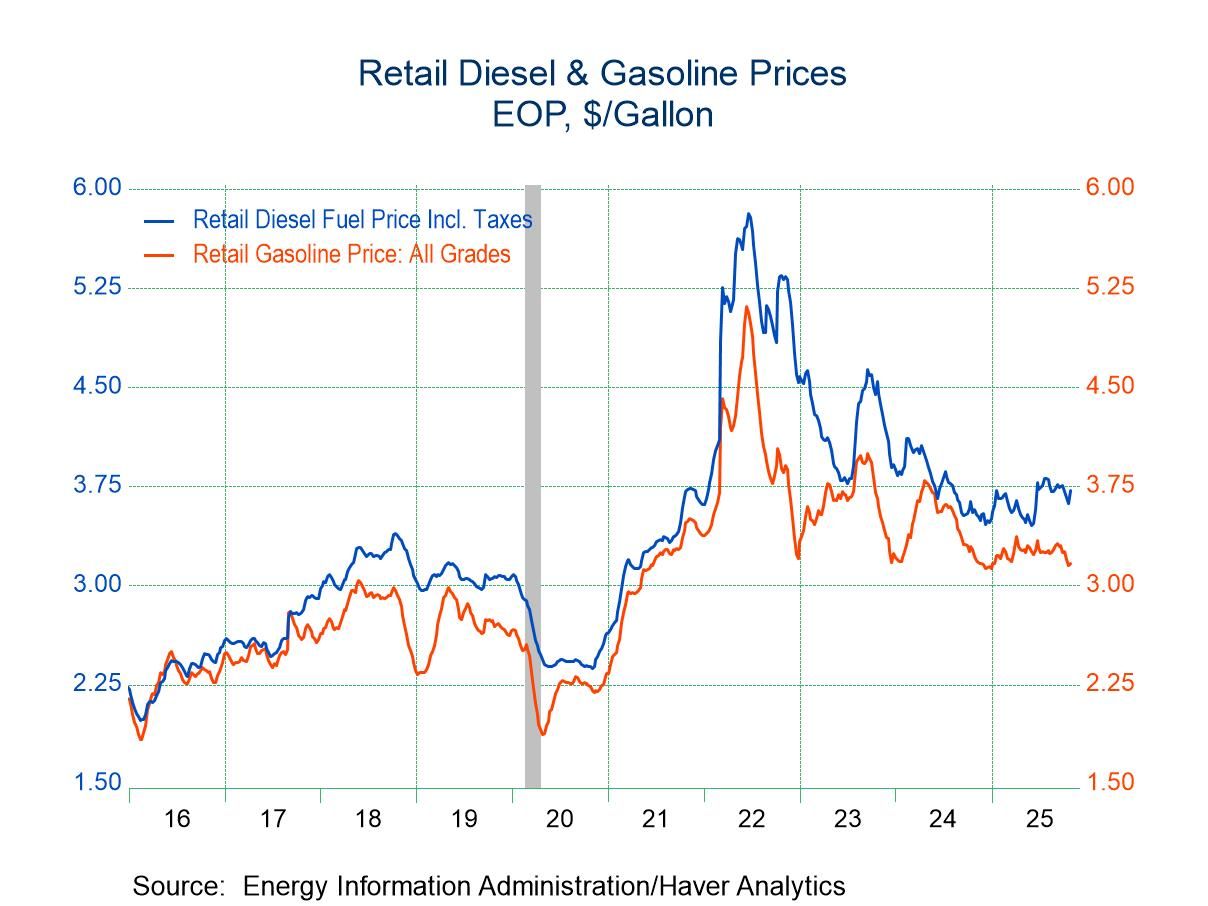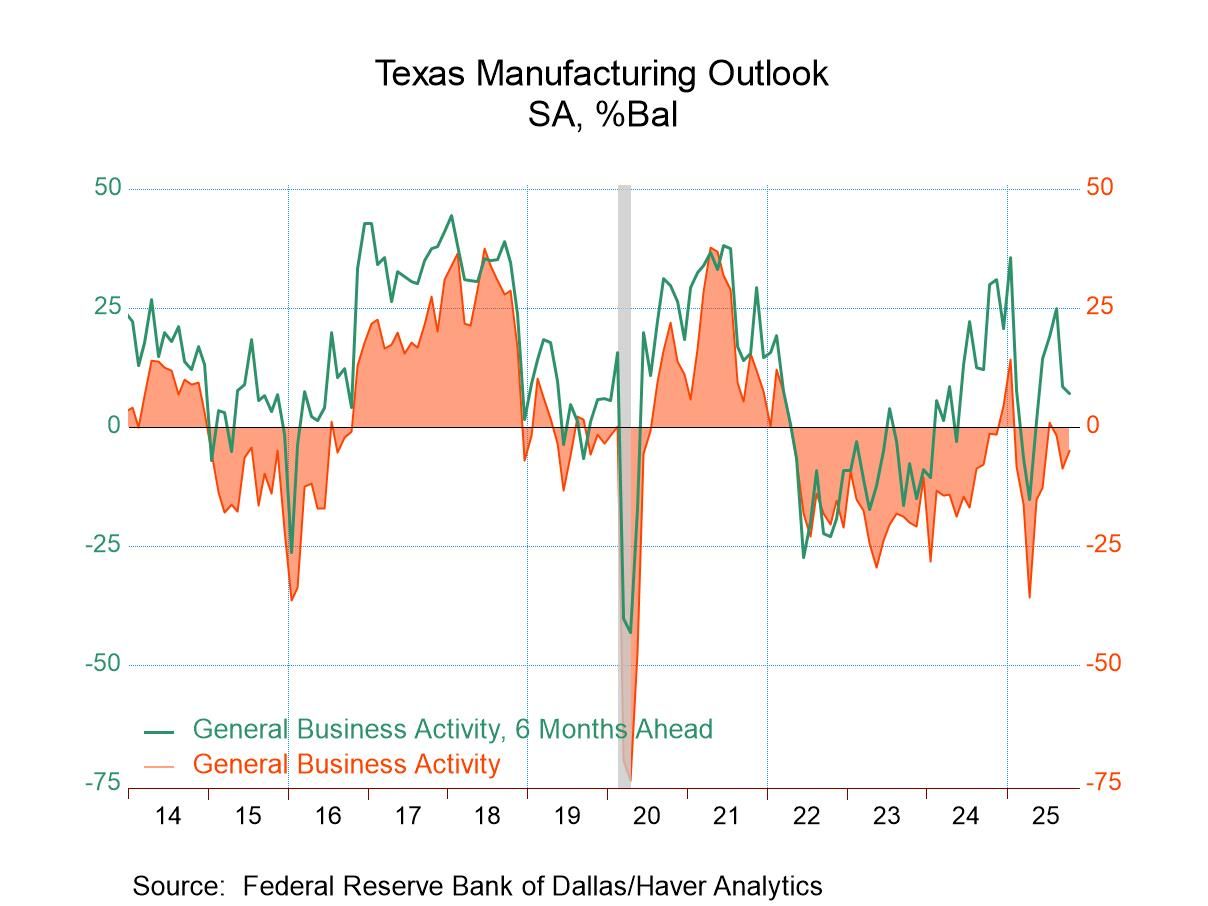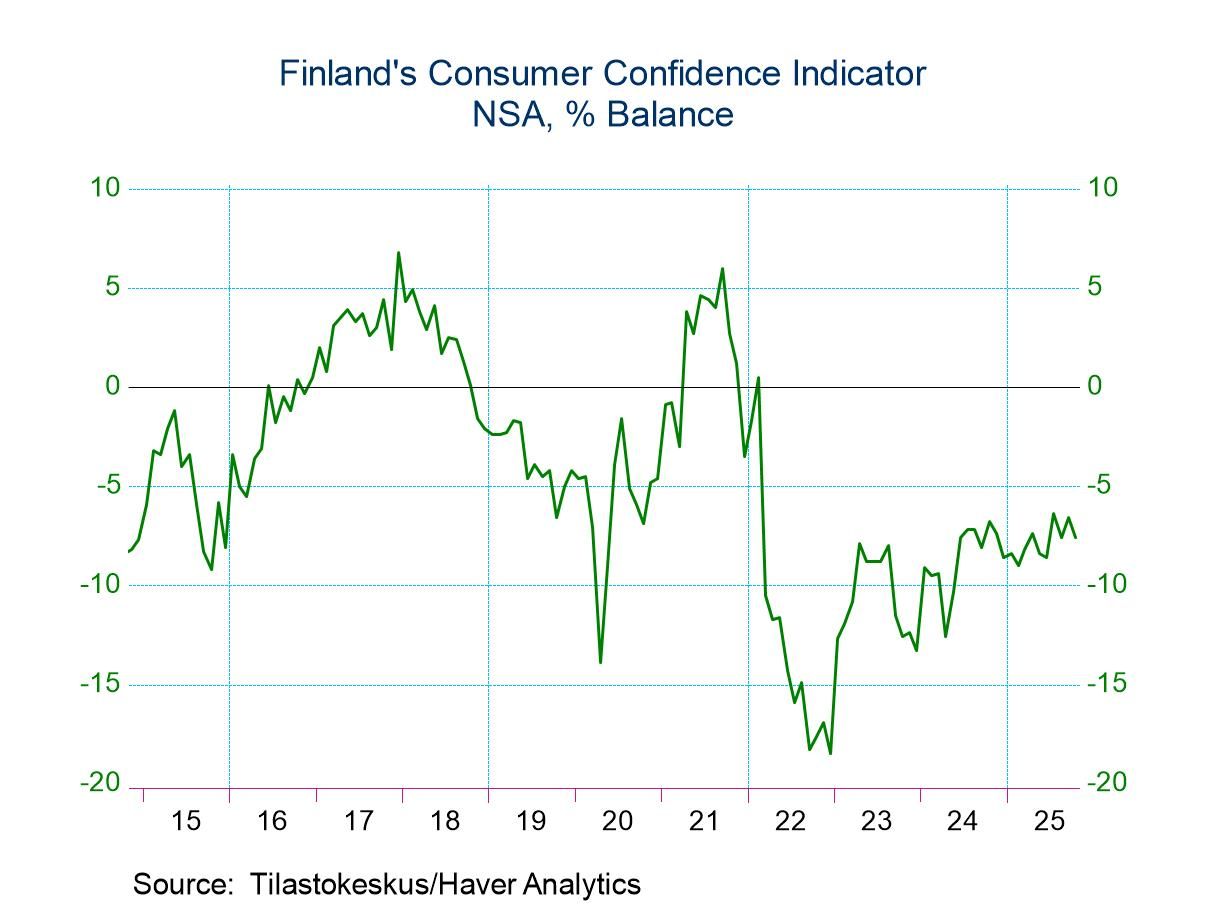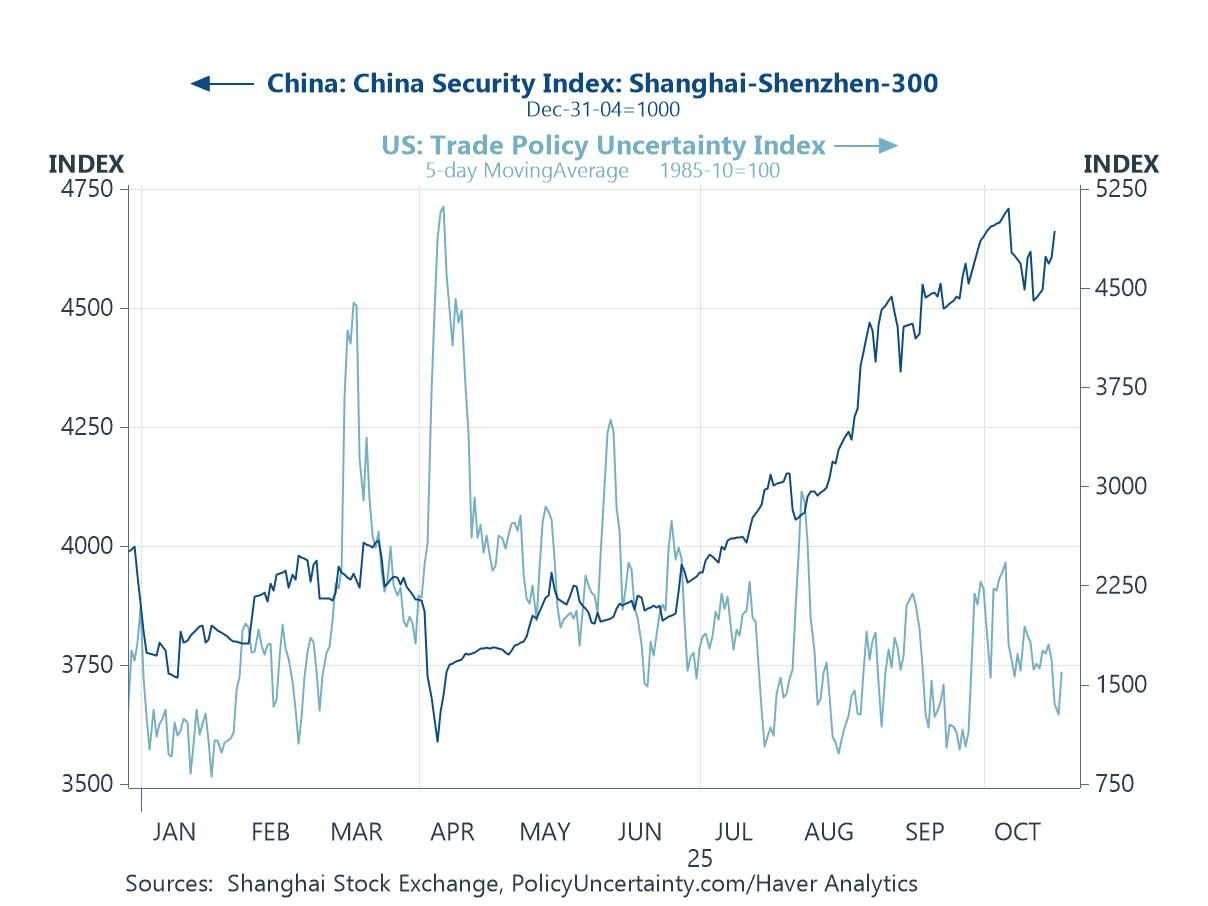 Global| Jan 05 2009
Global| Jan 05 2009U.S. Monetary Policy: Pushing On A String?
by:Tom Moeller
|in:Economy in Brief
Summary
Federal Reserve Board Chairman Ben S. Bernanke recently addressed the effects of the housing market's contraction on the financial markets. In reaction to the market's meltdown, and the depressing effects on consumer & business [...]
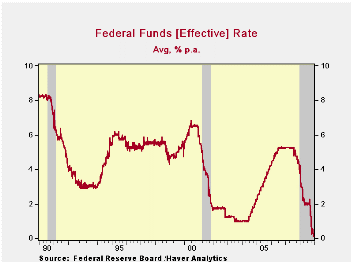
Federal Reserve Board Chairman Ben S. Bernanke recently addressed the effects of the housing market's contraction on the financial markets. In reaction to the market's meltdown, and the depressing effects on consumer & business spending, the U.S. Federal Reserve has eased monetary policy quite aggressively. Though targeted at 0.5% to 1.0%, the effective Federal funds rate now trades near 0.2% or lower, the lowest in fifty years. Also, the Fed created a new lending facility called the Term Asset-Backed Securities Loan Facility (TALF).
In reaction, the adjusted monetary base has surged. It has nearly doubled to $1.5 trillion as the Federal Reserve has provided banks with billions of added liquidity to shore up balance sheets and provide lending. Moreover, the Fed has accommodated an increase in the demand for cash balances. That has prompted the money stock (M2) to rise at an accelerated 13.6% annual rate during the last three months, up from little growth this passed summer.
As of yet, the current round of easing has paid few economic dividends. Consumer spending has collapsed as have corporate profits and business spending. A crisis of confidence, consumer and business, is in evidence. Is the Fed pushing on the proverbial string? Monetary ease does not usually generate an economic impact for three-to-six months after rates are lowered. But these are not normal times. Credit creation played a large part in the U.S. economy's growth during the last several years and the unwinding of that leverage should similarly take some time. Just how much leverage was created during the last few years and might now need to be unwound? Since the last recession occurred in 2001, and it was a mild one, the growth in assets (debt) held by commercial U.S. banks averaged 9.2% per year. That was the quickest growth since the mid-1980s, a time of faster growth in productive capacity, both of labor and of capital. Finance companies extended credit at an average rate of 11.5% annually. Therefore credit extension could be modest for the foreseeable future.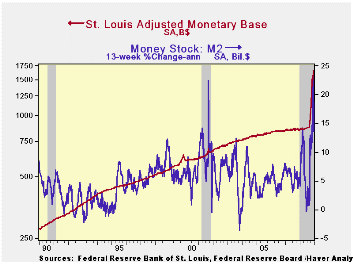
So why was there the overshoot of debt creation for which there now is a period of payback? Interest rates were held low from 2002 to 2004 as worries about price inflation subsided. In 2003, FOMC meeting minutes indicate a focus on economic growth that had been below its potential lifted by strong productivity gains, declining inflation expectations and a general absence of pricing power. Indeed inflation was more than under control. Occasionally, in the early-2000's, there was use of the word deflation and a modest concern on the part of the Fed that as inflation fell, monetary policy was tightening. Low interest rates were deemed appropriate. After 2004, debt growth surged as new credit vehicles were created, employment rose and home prices surged.
Will the Fed's current flood of liquidity be successful in stimulating economic growth? The answer is eventually, but most forecasters suggest not until the middle of next year. Chairman Bernanke recently observed that even if financial markets start to improve, consumer spending would remain depressed by the fall in household wealth and a lack of credit availability. Most agree that it will not be a V-shaped recovery. Credit extension could be under wraps for some time.
Typically, the Fed might worry that aggressive easing (flooding the economy with money) would eventually spur inflation higher. In fact the credit markets already are worrying. The spread between the yield on 10-year Treasury notes and the Fed funds rate has widened to 207 basis points. Though that's down in recent weeks from its steepest spread of over 300 basis points, it compares to a zero or negative spread during 2006 and 2007.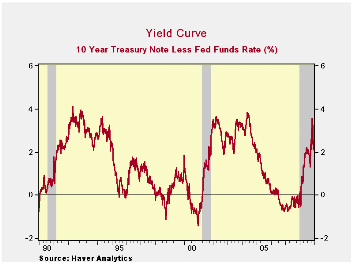
With regard to the more steeply sloped interest rate yield curve, is the market's concern about a rise in inflation justified? The definitive answer is "probably not." A pickup in inflation would normally be expected to appear after economic growth exceeded its "potential" for some time. Current potential growth in GDP, which is labor force growth plus productivity growth, likely is 2.5%. Thus, in this case given the current multi-year period of moderate growth that seems yet to come, inflation should not pick up for years. The recent collapse in oil prices, if sustained, certainly will diffuse inflationary pressure. However, there is a wild card scenario ... one of "stagflation." It could colloquially be described as too much money chasing too few goods. We'll have to keep our eyes open for that is a threat.
From one respected source for comprehensive economic forecasts, go to the Haver database MA4CAST which has forecasts from Macroeconomic Advisers in St. Louis, MO. They foresee inflation declining through the end of next year then picking up slightly. As for economic growth, modest after the current recession ends next quarter then a healthy rebound later in 2010.
The data used for the charts above can be found in Haver's USECON and USWEEKLY databases. Go to http://www.haver.com/ to learn more.
Globalization and the Changing Nature of the U.S. Economy’s Influence in the World from the Federal Reserve Bank of Dallas is available here.
Tom Moeller
AuthorMore in Author Profile »Prior to joining Haver Analytics in 2000, Mr. Moeller worked as the Economist at Chancellor Capital Management from 1985 to 1999. There, he developed comprehensive economic forecasts and interpreted economic data for equity and fixed income portfolio managers. Also at Chancellor, Mr. Moeller worked as an equity analyst and was responsible for researching and rating companies in the economically sensitive automobile and housing industries for investment in Chancellor’s equity portfolio. Prior to joining Chancellor, Mr. Moeller was an Economist at Citibank from 1979 to 1984. He also analyzed pricing behavior in the metals industry for the Council on Wage and Price Stability in Washington, D.C. In 1999, Mr. Moeller received the award for most accurate forecast from the Forecasters' Club of New York. From 1990 to 1992 he was President of the New York Association for Business Economists. Mr. Moeller earned an M.B.A. in Finance from Fordham University, where he graduated in 1987. He holds a Bachelor of Arts in Economics from George Washington University.



